Abandoned History: The Life and Times of Edsel, a Ford Alternative by Ford (Part VIII)

Edsel’s first year in 1958 proved very disappointing for the folks at Ford. The company’s unusual styling didn’t click with consumers, there was a sudden recession, and the average American consumer realized they didn’t have to buy a brand new car every year or two. And so it was that Edsel’s seven-model portfolio was reduced to just three for 1959. Leading the charge was the most successful (and cheapest) Edsel, the Ranger. It turned out that for Edsel buyers of 1958, less was more.
The Ranger lineup’s lack of standard equipment, less garish trim, and (crucially) its lower price made it the best-selling Edsel model in 1958. Of the 63,110 cars the company sold that year, a third of them (21,701) were Ranger models. The most popular body style was also the most basic, the four-door sedan. It sold 7,414 copies that year, and the Ranger two-door hardtop joined it in the over 5k sales club, with 6,005 sales.
Less popular was the more conservative two-door Ranger sedan, which sold just 4,615 copies. The least popular Ranger was the four-door hardtop, likely because of its price: Only 3,667 examples left the showroom in 1958. There was a very good reason consumers stayed away from the more expensive Ranger body styles, as even the basic ones were already too expensive.
As we covered in our last entry the Ranger was based on the Fairlane, and competitive with its Ford platform sibling as well as the Mercury Medalist. Keep in mind, though the Medalist was a short-lived model the Fairlane had a long history at Ford and was well-established prior to Ranger’s arrival.
The most expensive Fairlane was the 500 version, which was notably more expensive than both the Galaxie 500 and lesser Custom 300. Fairlane 500 was well-equipped, carried off acceptable Ford styling, and was available with more body styles than the Ranger. And shockingly, it had a lower base price too. The Fairlane 500 was priced between $2,410 and $3,148 ($24,957 to $32,599 adj.). A decent pricing range, but remember the top of the line was the expensive and fancy hardtop convertible.
Mercury offered the entry-level Medalist priced between $2,547 and $2,617 ($26,375 to $27,100 adj.), within range of the Fairlane but slightly more costly given its more prestigious badge. Ford and Mercury's pricing made the “why” of the Ranger difficult, because even the most basic version without heat, air conditioning, or carpets asked $2,484 ($25,723 adj.). The more expensive hardtop models started at $2,643 ($27,369 adj.).
Worth noting, if a customer shopped for one of the more expensive Ranger models, they could head over to the Mercury showroom and get the more upscale Monterey for less money. The Monterey started at $2,652 ($27,463 adj.) and offered many different body styles like the Fairlane 500. Ford could never clarify if Edsels were supposed to be a step above or below Mercury.
In 1959, Ford hoped to elevate the Edsel to consumers by simplifying the lineup and completing some quick adjustments to the Ranger. Pacer and Citation were dropped from the sedan line, leaving Ranger to pick up the Pacer’s lower-mid level customer who was not prepared to pony up for a Corsair. The Edsel brand dropped the Teletouch transmission option across the line for 1959. In its place was the more conventional column shift automatic (Cruise-O-Matic).
The simplified Edsel sedan lineup and cost-saving measures meant the Ranger and Corsair shared the same platform for the first and only time. The Ranger’s wheelbase grew by two inches to 120”, while the Corsair’s shrunk by four inches. Previously the Corsair shared the longer 122-inch wheelbase of the upscale Mercury Turnpike Cruiser. The Fairlane remained on its 118-inch wheelbase in 1959.
Ranger’s overall length shrunk by a couple of inches, down to 210.9” across all body styles. The width grew by an inch, to 79.8 inches overall. Mechanically the Ranger was unchanged from 1958 and used the same three-engine lineup: Mileage Maker I6, Ford’s Y-block V8, and the new 361 FE V8.
Even though there was not a great demand for all four of the Ranger’s body styles, Edsel persisted in offering two- and four-door hardtops and sedans. Styling was new once again, as Ford designers edited the Edsel range away from the gaping horse collar look consumers avoided in 1958. Designers had to walk a thin line in 1959, working to make the Ranger more acceptable looking without necessitating all new sheet metal.
The ‘59 Ranger maintained many of the 1958 model’s body panels like the doors and roof but looked overall like a different car. The headlamps set within ovoid pods in the fenders were relocated to within the boundaries of the grille, which was new. Fenders were newly squared off, and the hood shut line was simpler than the prior year. Perched at the corner of both fenders was the Edsel hood ornament. It’s the only instance your author can think of where a manufacturer used dual hood ornaments.
In place of the horse collar grille was a more muted implementation of the same basic theme. There was a large central grille section that was upright and collar-shaped, flanked by a horizontal grille. The difference in 1959 was how the grille was filled in, as the collar no longer looked like trim was missing. The grilles on either side touched the central grille and looked more cohesive.
The grille also filled more of the fascia with chrome and meant less painted metal was showing. Additionally, the grille wrapped more neatly around less of the fender, and parking lamps were moved to a more traditional location in the bumper. Speaking of the bumper, it was still split in two by the grille but had less molded detailing than it did in 1958.
Along the side, new trim appeared in a spear shape. It grew a bit wider with a flourish at the front door and then narrowed as it reached the end of the rear fender. The scallop design was no more, and the horizontal fins were lessened compared to the prior year, but still present. The 1959 Ranger didn’t have trim on its fins, and gone too were the odd boomerang lamps.
In their place were a set of six total circular lamps (three per side), which looked both more traditional and closer to what Ford used on the Fairlane in 1958. For its part, the Fairlane had moved on to a different rear-end look for 1959. The trunk lid was softened on the revised Ranger, and no longer contained a rear vent below the back window. Ranger’s rear bumper was changed in 1959 and adopted a more curved scalloped shape.
The Ranger’s new look in 1959 was a white flag from Ford, who’d heard consumer complaints about 1958 loud and clear. The ‘59 was less in your face in every single way than the prior year. But would the distillation of Edsel styling work in Ranger’s favor? We’ll talk about sales and pricing in our next installment, and check out the truly all-new Ranger that debuted in 1960.
[Images: Ford, Dealer]
Become a TTAC insider. Get the latest news, features, TTAC takes, and everything else that gets to The Truth About Cars first by subscribing to our newsletter.

Interested in lots of cars and their various historical contexts. Started writing articles for TTAC in late 2016, when my first posts were QOTDs. From there I started a few new series like Rare Rides, Buy/Drive/Burn, Abandoned History, and most recently Rare Rides Icons. Operating from a home base in Cincinnati, Ohio, a relative auto journalist dead zone. Many of my articles are prompted by something I'll see on social media that sparks my interest and causes me to research. Finding articles and information from the early days of the internet and beyond that covers the little details lost to time: trim packages, color and wheel choices, interior fabrics. Beyond those, I'm fascinated by automotive industry experiments, both failures and successes. Lately I've taken an interest in AI, and generating "what if" type images for car models long dead. Reincarnating a modern Toyota Paseo, Lincoln Mark IX, or Isuzu Trooper through a text prompt is fun. Fun to post them on Twitter too, and watch people overreact. To that end, the social media I use most is Twitter, @CoreyLewis86. I also contribute pieces for Forbes Wheels and Forbes Home.
More by Corey Lewis
Latest Car Reviews
Read moreLatest Product Reviews
Read moreRecent Comments
- Theflyersfan Nissan could have the best auto lineup of any carmaker (they don't), but until they improve one major issue, the best cars out there won't matter. That is the dealership experience. Year after year in multiple customer service surveys from groups like JD Power and CR, Nissan frequency scrapes the bottom. Personally, I really like the never seen new Z, but after having several truly awful Nissan dealer experiences, my shadow will never darken a Nissan showroom. I'm painting with broad strokes here, but maybe it is so ingrained in their culture to try to take advantage of people who might not be savvy enough in the buying experience that they by default treat everyone like idiots and saps. All of this has to be frustrating to Nissan HQ as they are improving their lineup but their dealers drag them down.
- SPPPP I am actually a pretty big Alfa fan ... and that is why I hate this car.
- SCE to AUX They're spending billions on this venture, so I hope so.Investing during a lull in the EV market seems like a smart move - "buy low, sell high" and all that.Key for Honda will be achieving high efficiency in its EVs, something not everybody can do.
- ChristianWimmer It might be overpriced for most, but probably not for the affluent city-dwellers who these are targeted at - we have tons of them in Munich where I live so I “get it”. I just think these look so terribly cheap and weird from a design POV.
- NotMyCircusNotMyMonkeys so many people here fellating musks fat sack, or hodling the baggies for TSLA. which are you?



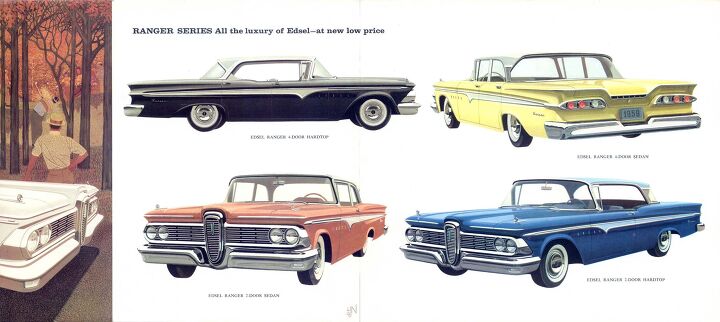























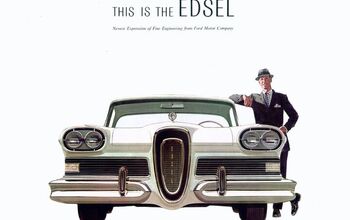
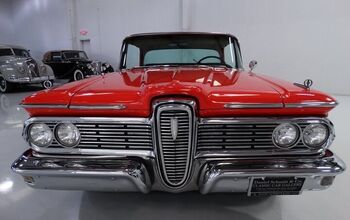
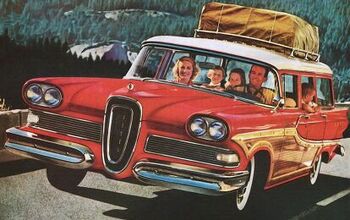
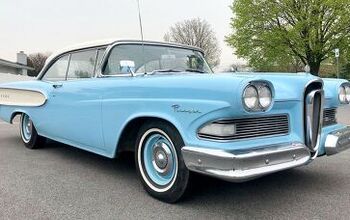










Comments
Join the conversation
I always felt that if the '59 car had come out in '58, the line had been simplified down to two models for the first year, and those two models had been priced somewhere between the Fairlaine 500 and the cheapest non-Medalist (as that was a one-year panic move to keep the dealers happy) Mercury, it would have gone over a lot better than what was actually done.
With this year's models and lineup, it sounds like they could have had a decent shot at Pontiac. Leaving Mercury to take on Oldsmobile and maybe Buick.
I do miss the exuberant exterior colours of the 1950's domestics, including the two-tone paint jobs. And 'there is no face like chrome'.